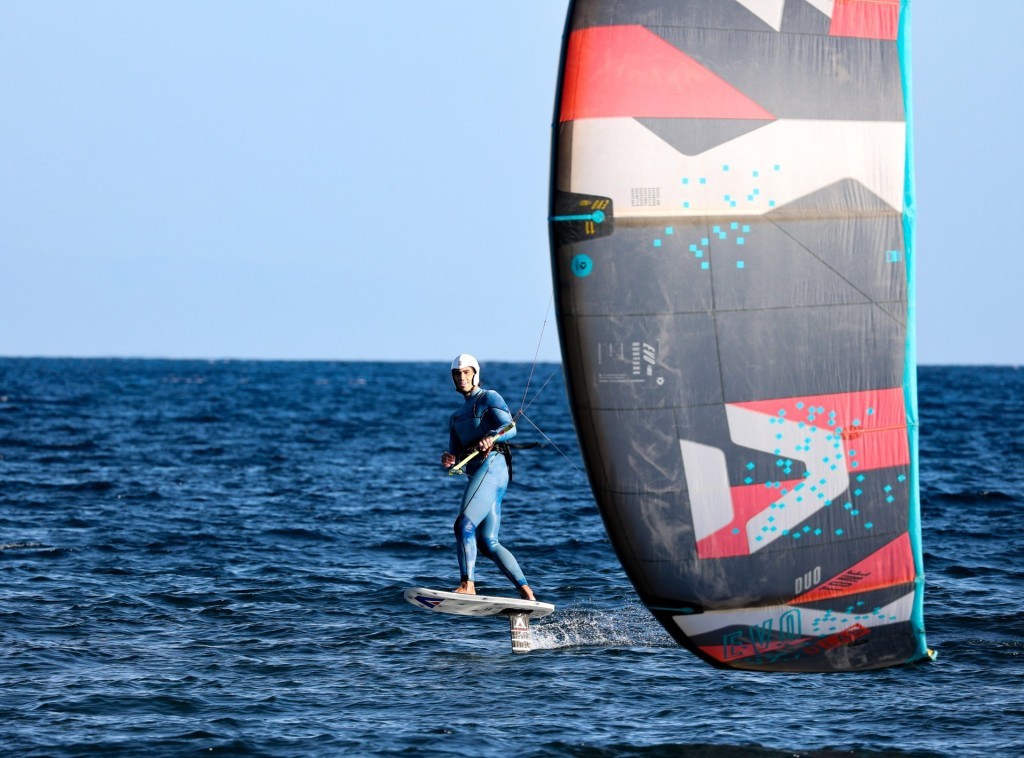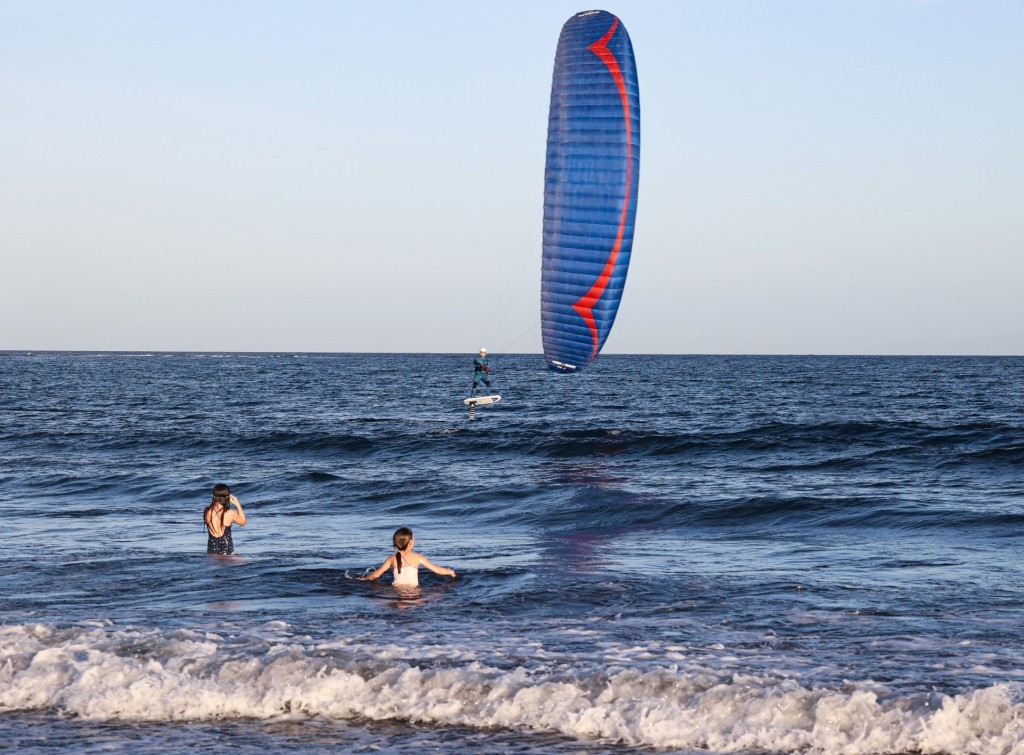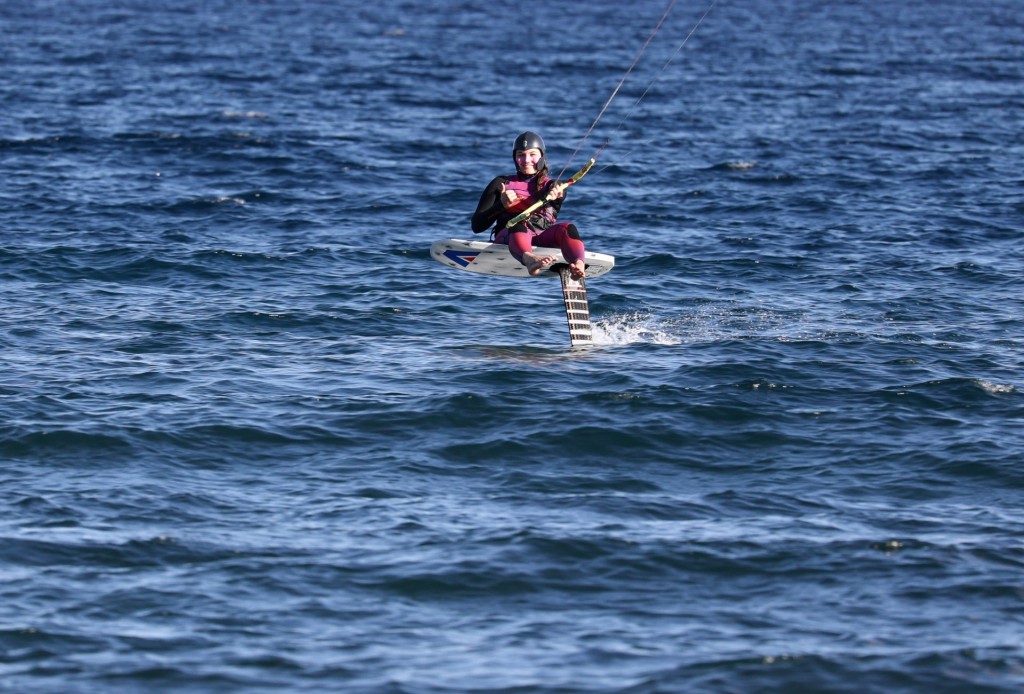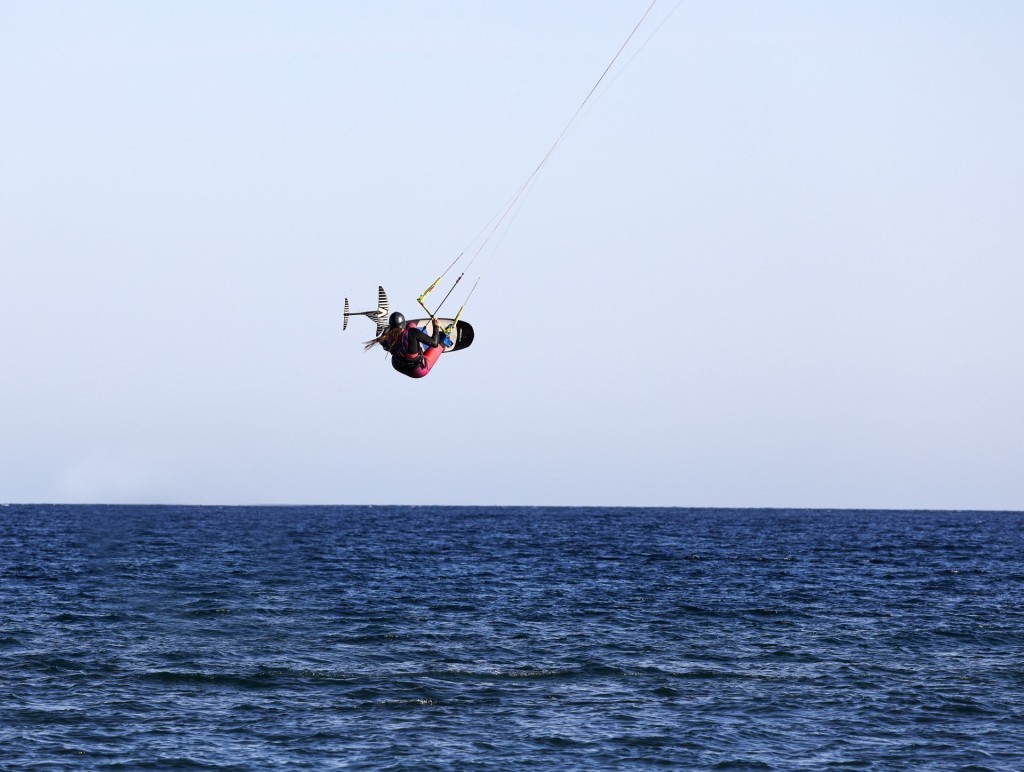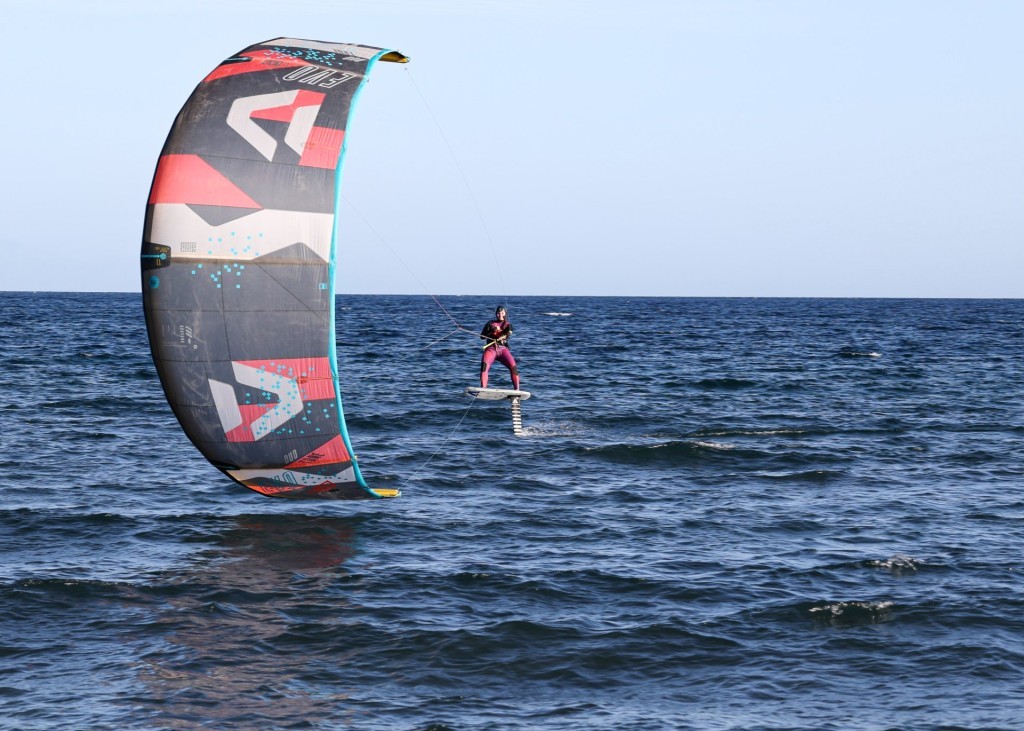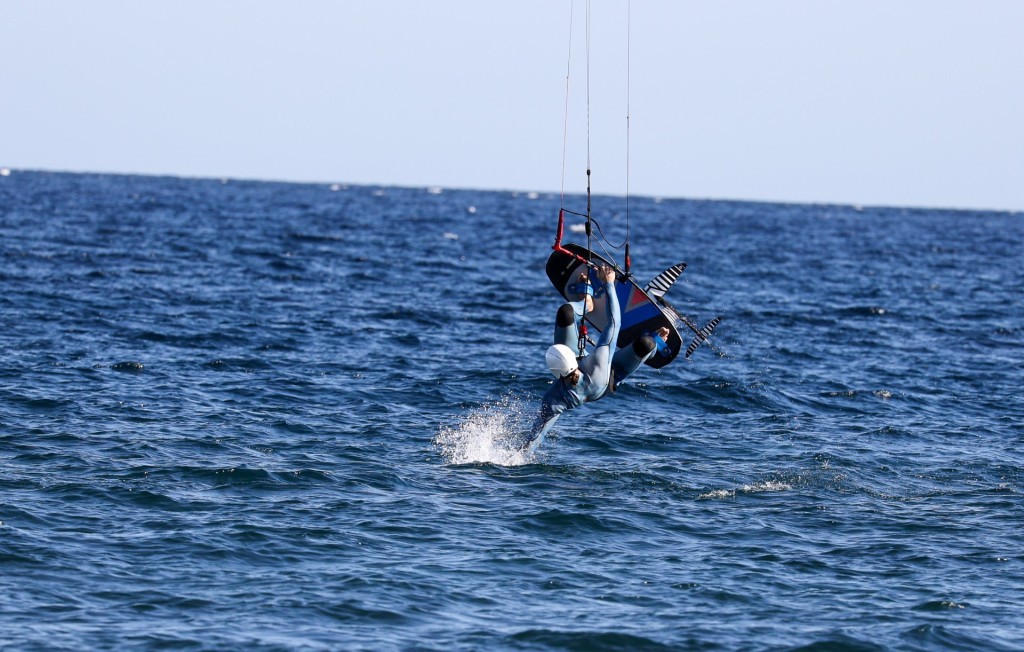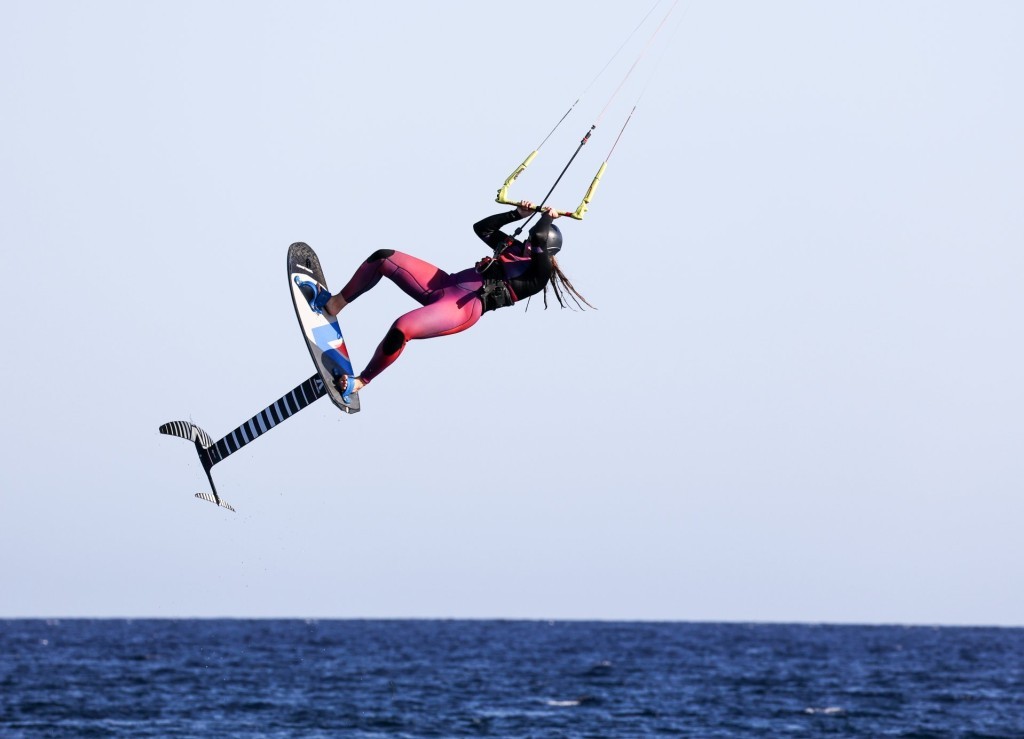
How To: Work On Your Light Wind Kite Skills
Features / Thu 15th Feb, 2024 @ 12:00 pm
Andrea Zust and Peer Schnyder are back with another helpful how-to guide on kite skills after their recent trip to Tenerife, where the wind just wasn’t strong enough to actually kite!
Most of us have experienced it before. You book the ultimate strong-wind, wind-reliable kitesurfing holiday destination during the high season. You’ve been looking forward to it for weeks, checking the great forecast regularly and planning what tricks you want to learn next. And then it’s finally time. You pack all your gear, get into the holiday mood, and are ready for some sun, fun, salt water, and wind action, but when you arrive, the wind just isn’t strong enough to actually kite.
Now, if you are a light-wind kiter with good foiling skills and at least 15m foil kites, this might not be a problem for you. But if you happen to be one of the more regular twintip or strapless kiters, all your holiday enthusiasm and stoke suddenly crumble, replaced by frustration.
If there is no wind at all, we can’t help you… you’ll just have to make new holiday plans, maybe go sightseeing or try some other activities. However, if there is just enough wind for a kite to fly but not for riding, there are still some options left to improve your overall kiting skills. After all, practice makes perfect, right?! Even just flying a kite can help you improve your kite handling and become more confident on the water later on as well.
There are a few skills you can work on without riding on the water. If you are interested in finding out what these are exactly, keep reading. If you feel like your kiting skills are at their max already and there’s nothing more to improve, think again. Can you safely loop a kite? When was the last time you’ve successfully done a self-rescue without making a huge mess with the lines or without losing your board on the way? Do you know the main tips and tricks of flying a tube kite in light wind? When was the last time you trimmed your kite lines?
In the next few paragraphs, we’ll see what exactly you can do during lower wind days when you start getting bored of lying in the sand the whole day. So, grab a cup of coffee, take out a pen and take notes because the following skills might save your kite holidays or a kite session in the future.
Loop it!
One very handy skill in light wind but also in stronger wind is loops. You can use them either in low wind to keep the kite in the air, and you can use them to generate power for a water start or to get going on a hydrofoil. Loops are very useful in wave riding, so you don’t overtake your kite, and they come in handy for going downwind faster. They are also the basis for learning how to do heliloops when jumping for smooth and slow landings or even kiteloops later on.
Loops are something you can learn and practise best in lighter wind; this way, the kite won’t generate as much power, and it’s safer if you make mistakes. The best is to take a smaller kite, but it works just the same with the bigger sizes. Looping a kite is pretty easy; you just have to do it enough times correctly to see that it’s not as scary as you might think in the beginning.
The main rule to keep in mind here is: “always finish the loop”. This means that when you start looping your kite, don’t stop in the middle; finish the loop until your kite is back in its initial position. The second thing to concentrate on is to position your hands wider on the bar and move them more towards the floaters in order to have more leverage. Thirdly, use both your hands for looping in the beginning. This means you should pull with one hand while at the same time pushing with the other. The harder you push and pull, the smaller the kite’s radius will be and the less power it will generate.
Try practising loops in the water, ideally, somewhere you can still stand but not too shallow; this way, if you get pulled, you don’t hurt yourself. Make sure there are no other kiters, obstacles, or people downwind of you. Once you find a good spot, try to stand in a stable stance with your legs apart and one foot further to the front than the other so that you can counter-hold when the kite starts pulling you forward. Find the pressure point on the bar, then put the kite to 12 o’clock.
When you’re ready, decide which side you want to loop the kite to and pull on that side with one hand as hard as you can whilst pushing the other side of the bar upwards. You want to force the bar into a 90° tilted position. Keep the bar in this position until the kite is all the way around. Practise this until you start feeling confident in looping your kite to both sides. Once you’ve mastered this new manoeuvre, you can start practising it in different positions in the wind window.
Once you’re confident doing this without a board, you can start doing exactly the same on the water. Here, keep in mind that looping the kite towards the direction of your front foot generates less, and looping your kite towards the direction of your back foot generates more power and downwind pull.
As mentioned before, looping is also quite handy to keep your kite in the air in light wind. In such a situation, if you see your kite falling to one side and you can’t steer it back to 12 o’clock normally, just loop the kite to the side where it’s falling to bring it back up. You can practise this easily in really light wind, too. Give it a go, you can do it!
How to fly a tube kite in light winds
Now, let’s have a look at the most important bullet points for light-wind kite flying:
- If you’ve read the previous paragraph, you’ll know already that loops help keep your kite from falling when losing line tension, but let’s have a look at some other handy tips.
- Don’t keep your kite at 12 o’clock; it might front-stall.
- Keep your kite in motion all the time, flying it from left to right and vice versa constantly or loop it.
- Never steer your kite past 10, or respectively, 2 o’clock in the wind window because the farther on the edge of the wind window the kite is, the less line tension you’ll have.
- Specifically for foiling: try getting on your board as fast as you can. It’s easier to keep your line tension when riding.
- Don’t go for too big and heavy tube kites, especially when foiling. Opting for a smaller, more agile kite will help as you can generate more power through movement, and it will be less heavy, too.
Practising self-rescues
This important technique is something kiters seldom practise because we usually stay at kite spots that offer rescue services. However, doing a nice and clean self-rescue can still help in preventing line tangles and messes. It also helps speed up the boat rescue service, and it will give you more confidence on the water, knowing that you are independent or in situations where you have to wait for a rescue boat to come. At kite spots that are crowded, it may take some time for a boat to reach you.
There are many ways of doing a self-rescue. It is best to find the method that suits you most via YouTube, where there are countless “how to” videos. We personally recommend the IKO or VDWS technique, however. Again, for this, you don’t need good wind, so it’s ideal to practise when you can’t go out on a board. Practice self-rescues in shallow waters first until you master it, then move on to practising in deeper water after.
Our best advice here: don’t be in a hurry, take your time, do everything step by step properly and make sure to wrap all lines tightly enough so that they can’t fall off the bar when you’re swimming.
Trimming your gear
Something kiters tend to forget about is taking care of their gear. This is important not only so that it lasts longer but also that it stays safe. Go through the following checklist from time to time, as these are the most important gear items for safety:
- Check your lines from time to time. Can you find any weak points? Are there knots in the lines that shouldn’t be there? Are both steering lines the same length?
- Inspect the bar. Is your safety system still working seamlessly? Do you wash it regularly with fresh water after use? What about the lines that go into the bar handle? Are they still intact?
- Check your kite, too. Are the bridles and pigtails in good shape or worn?
Learn how to foil
Trust us, this is a game changer! 😉
Watch videos on YouTube
There are plenty of videos on how to improve your kite skills. Watching a video and internalising the steps before trying to learn a new trick is very helpful and saves you a lot of time.
With the above techniques, you should be able to keep yourself busy on the lighter wind days while also developing your kiting skillset. Best of all? You’ll also be a safer, more informed kiter by the time the wind picks back up!
Words and photos in this article by Andrea Zust and Peer Schnyder.
By Crystal Veness
Editor at IKSURFMAG, Crystal Veness hails from Canada but is based in South Africa. When she isn't busy kitesurfing or reporting on the latest industry news for the mag, she is kicking back somewhere at a windy kite beach or working on creative media projects.



